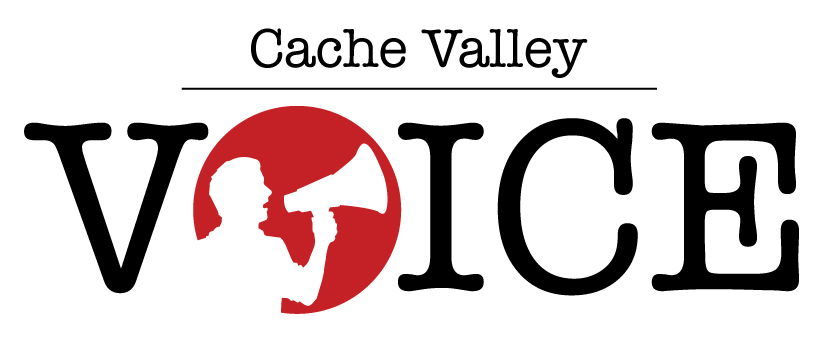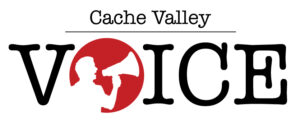Patrick Belmont
June 6, 2025
When Logan’s City Council voted to buy into nearly 30 more years of fossil fuel energy they weren’t just making a financial decision. They were making a moral one.
In a world increasingly destabilized by carbon pollution, doubling down on fossil fuels is a choice with escalating consequences—for ecosystems, for vulnerable communities, and for our own children and grandchildren. In Cache Valley and across the world, those costs are rising fast.
Don’t believe me? Ask your insurance company.
A board member of Allianz, one of the world’s largest insurance companies, recently warned that we are approaching a point where climate-related risks “cannot be transferred” because many assets are becoming uninsurable, “risk cannot be absorbed” because the costs are too big even for many governments to cover, and “risk cannot be adapted to” because critical physical limits will soon be exceeded. His conclusion? We are approaching a point where “capitalism as we know it ceases to be viable.”
This, from a conservative risk analyst. His concern isn’t political. It’s practical. And it’s shared by a growing number of experts across the financial and national security sectors. Concern about climate change isn’t a liberal or conservative issue…it’s the natural response of anyone who is paying attention. The risks are growing. Fast.
Let’s take a brief look at the evidence behind his sobering warning.
A Planet Pushed to Extremes
Examples of accelerating climate damage are far too numerous to list, but here are a few. In the summer of 2021, an unprecedented “heat dome” smothered the Pacific Northwest. Lytton, British Columbia hit 121°F—then burned to the ground the next day in a wildfire sparked by the heat. More than 1,000 people died. An estimated one billion sea creatures died as tidal pools turned into slow cookers.
In 2022, Europe suffered its deadliest summer on record: 61,000 people killed by heat. Rivers dried up. Crops failed. That same year, a third of Pakistan was submerged after monsoon rains intensified by climate change displaced 33 million people and caused over $30 billion in damages.
In 2023, Canada saw the most destructive wildfire season in its history: over 37 million acres burned, 200,000 people evacuated, and smoke blanked cities and people’s lungs from New York to Toronto. The 2025 LA fires are projected to cause over $200 billion in losses.
These are just a handful of hundreds of devastating events that are becoming more common with each increment of warming. I can go on with dozens more examples from just the past few years. These aren’t just statistics. These are stories of people whose lives are ended prematurely or turned upside down. This is what destabilization looks like. Not a future threat, but a rapidly growing pattern of harm, unfolding now. Every bit of carbon pollution we generate makes it worse.
The Unraveling Web of Life
The oceans, long the planet’s shock absorbers, are overheating. In 2023, sea surface temperatures hit record highs every single day for 14 months straight. Off Florida, ocean water topped 100°F. The Great Barrier Reef has lost more than half its coral to heat and fossil fuel pollution. Scientists warn that without rapid cuts in fossil fuel use, we could lose all coral reefs globally within 15 years—ecosystems that support 25% of marine life and feed a billion people.
Forests are straining, too. Globally, we’ve lost more than one-third of original forest cover. Parts of the Amazon now emit more carbon than they absorb. Rising heat and drought are weakening tree health, fueling megafires, and accelerating ecosystem collapse.
Meanwhile, insect populations—the unpaid workhorses of global agriculture—are crashing. Some studies report a 75% decline in flying insect biomass over the past 30 years. These creatures pollinate our crops, control pests, and keep food webs functioning. Their loss threatens harvests, ecosystems, and the resilience of rural economies.
This isn’t just environmental degradation. It’s systemic breakdown.
Some of these changes are irreversible on human timescales. And we are approaching tipping points: feedback loops in the Amazon, permafrost, ocean circulation, and ice sheets that, if crossed, could guarantee runaway collapse. Pause for a moment and let that sink in.
City Council was informed of all of this. In fact, I sent them a summary of the 40 most concerning recent climate trends and events, each including references. They offered no response. Then four out of the five (Mark Anderson, Mike Johnson, Jeannie Simmonds, & Amy Anderson) voted to perpetuate the damage for another 30 years. Don’t you think Logan residents deserve an explanation for why they chose to overlook the risks?
A Web of Interconnected Risks
Our climate crisis is not isolated. It’s deeply intertwined with our economy, food insecurity, migration pressures, and political instability.
Climate change is a threat multiplier. When crops fail in Central America, families migrate north. When water runs out in the Middle East, conflict flares. When extreme weather disrupts supply chains, markets suffer. Climate disruption amplifies every other challenge we face.
The economic damages are already staggering, and rising. But the real costs cannot be measured in dollars, they’re measured in lost homes, fractured communities, degraded trust, and rising instability and anxiety.
The World Bank now projects over 200 million people could be displaced by climate impacts by 2050. That’s not a distant forecast. It’s a humanitarian, economic, and political reckoning already underway.
Military planners, insurers, economists, and humanitarian organizations now agree: climate change is not just an environmental issue. It is a systemic threat. To health. To peace. To markets. To everything. As young people come to grips with the future we’re leaving them, their anger and despair are rising. What do we imagine future generations will say as they come to find out we knew—and continued anyway?
Cache Valley Is Not Immune
Here in Cache Valley, we may feel far from wildfires in Canada or floods in Pakistan. But we are not immune. Utah is warming faster than the global average. Our snowpack is shrinking. Low flows in recent years have threatened the health of the Logan River. Local farmers have reported snowless Januarys and increasingly unpredictable planting cycles. Great Salt Lake will nearly reach its historic low again this year and increased warming makes it exceedingly difficult to refill the lake. As you prepare for more toxic dust storms, remember—it doesn’t have to be this way.
By 2050, even under optimistic projections, the number of 90+ degree days in Cache Valley is expected to double. This will affect public health, agricultural viability, and energy use. And as wildfire smoke becomes a regular feature of summer, Cache Valley’s air will become more hazardous for our kids and elders. How much worse will we let it get?
The future isn’t written yet. And we all have a role to play in shaping it.
A Community Blessed with Responsibility
We are fortunate to live in a valley that is relatively safe, well-resourced, and well-informed. That makes our city’s decision to keep investing in fossil fuels even more troubling.
Because with knowledge and capacity comes responsibility.
We know the science. We see the risks. We have the tools. And yet our leaders voted to lock us into fossil energy through mid-century—investing in infrastructure that increases risk and limits our options.
This decision isn’t just abstract. It perpetuates real harm—not only to distant communities that experience extreme weather around the world. But also to nearby communities like Pocatello, which will breathe our fossil fuel plant’s exhaust. And of course, harm to ourselves, not only by degrading the very ecosystems and climate systems that our quality of life depends on, but by undermining our basic sense of humanity when we become okay with passing hurt to others for the sake of convenience.
Some have asked whether it’s fair to call City Council’s decision to build new fossil fuel power plants an “act of violence.” That’s a question worth sitting with. But we can all agree on this: it is a decision with real consequences. And it didn’t have to be this way.
A Call for Moral Leadership
What we need now isn’t blame. We need clarity. And courage. We need elected officials to understand they will be held accountable. The gas contracts are signed. But our future is still unwritten. We can choose how we invest, how we conserve, how we build, and how we lead from here.
This isn’t about political affiliation. It’s about stewardship. About living within our means—not just financially, but ecologically. It’s about using the knowledge and resources we’ve been given to do better. And it’s about restoring our relationships: to each other, to future generations, and to the natural systems that make life in this valley possible.
In a time of escalating risk, the path of least resistance is no longer acceptable. We owe it to each other—and to those who come next—to lead with vision, humility, and care.
Because the consequences are real. But so is the opportunity to do better.
Part 3, moving forward, coming soon…
Further Reading
My list of 40+ of the most concerning recent climate trends and events:
Extreme Weather & Human Impacts
- World Weather Attribution (2022–2024) –
A collaborative scientific initiative that rapidly assesses the role of climate change in extreme weather events—such as the 2021 Pacific Northwest heat dome and 2022 Pakistan floods.- European heatwave deaths (2022) –
https://www.nature.com/articles/s41591-023-02419-z
Peer-reviewed study estimating 61,000 excess deaths during Europe’s 2022 heatwaves. - Pakistan floods and displacement (2022) –
https://www.britannica.com/event/Pakistan-floods-of-2022
Covers humanitarian impacts, crop loss, and economic damage after one-third of Pakistan was inundated.
Ecosystem Collapse & Irreversible Change
- Insect population declines –
https://journals.plos.org/plosone/article?id=10.1371/journal.pone.0185809
Study finding >75% decline in flying insect biomass in some European reserves over three decades. - Coral reef bleaching and ocean heatwaves –
https://www.noaa.gov/news-release/noaa-confirms-4th-global-coral-bleaching-event
NOAA’s 2024 update on record sea temperatures and widespread coral bleaching. - Tipping points and ecological thresholds –
https://www.science.org/doi/10.1126/science.abn7950
Landmark paper identifying planetary “tipping elements” like the Amazon, permafrost, and ice sheets at risk of abrupt change.
Global Instability, Migration & Risk
- World Bank – Groundswell: Acting on Internal Climate Migration
https://www.worldbank.org/en/news/press-release/2021/09/13/climate-change-could-force-216-million-people-to-migrate-within-their-own-countries-by-2050
Projects that 216 million people could be internally displaced by 2050 due to climate impacts. - Allianz climate risk statements (2024) –
https://www.linkedin.com/pulse/climate-risk-insurance-future-capitalism-g%C3%BCnther-thallinger-smw5f/
Highlights the growing concern within the insurance sector that climate-related risks are becoming uninsurable. - US wildfire costs and displacement –
https://www.nytimes.com/spotlight/canadian-wildfires
Reporting on how Canada’s record-breaking wildfires sent smoke across U.S. cities and forced mass evacuations.
Utah & Cache Valley Impacts
- Utah State University – Climate Change and the Logan River(2024)
https://extension.usu.edu/climate/research/logan-river-climate-change
Local report on how rising temperatures and declining snowpack are impacting river flows and water supply in Cache Valley.
- Fox13 News – Cache Valley farmers on disappearing snow(2024)
https://www.fox13now.com/news/local-news/northern-utah/lack-of-snowfall-worries-northern-utah-farmers-businesses
Farmers in Logan discuss Januarys without snow and the ripple effects on irrigation, feed, and crop viability.
Additional Resources:
Scientists’ Warning on Fossil Fuels – Oxford Open Climate Change (2024)
A high-level review by 800+ scientists detailing why fossil fuels must be rapidly phased out to prevent catastrophic planetary harm.
Fossil Fuel Atlas – Stockholm Environment Institute (2023)
A global brief outlining how fossil fuel expansion undermines climate goals and sustainable development.
Climate Change, Fossil-Fuel Pollution, and Children’s Health – NEJM (2022)
Explores the direct, ongoing health effects of fossil fuel combustion on children’s health globally.
The 2022 Report of the Lancet Countdown on Health and Climate Change
A major annual review of climate-related health risks, including the compounding dangers of fossil fuel reliance.
Is there an association between hot weather and poor mental health outcomes?
A systematic review and meta-analysis of interactions between climate change and mental health.
Climate Watch – World Resources Institute
A data platform tracking countries’ emissions and energy trajectories, with open tools to explore policy impacts.
Image: Earth from moon horizon.
The source image for this illustration is a photo in the public domain from the Image Science and Analysis Laboratory, NASA-Johnson Space Center. “The Gateway to Astronaut Photography of Earth.”


